The Inch family share their experiences producing deer velvet, the all-natural health supplement in high demand
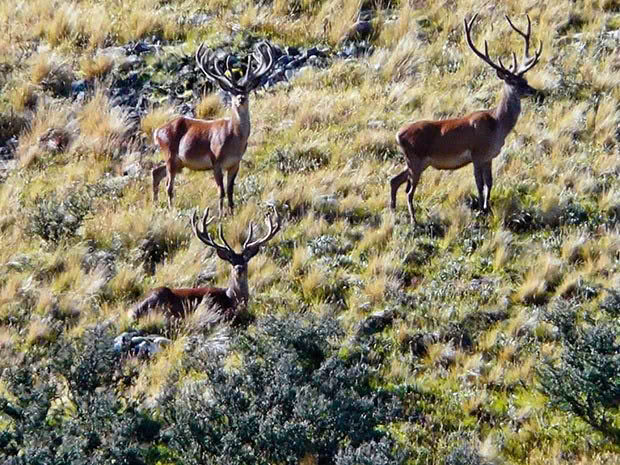
Rodney Inch and his family farm red deer with a velvet hand and a soft touch, but it has been a learning curve for his city-born-and-bred wife.
Words and Photos: Jenny Somervell
This story first appeared in the January 2015 edition of NZ Lifestyle Block.
Rachael Inch muses how different her life might have been if her husband-to-be had not climbed in the wrong window. Rodney was visiting a friend in town and in one of those freak, meant-to-be, accidents, climbed in Rachael’s window instead of his friend’s.
“He was a typical farmer who didn’t really talk, and I remember thinking how arrogant he was,” says Rachael. “And he was, like, ‘You’re too boisterous for me!’ “He never wanted to be with me but I made him!” she jokes.
Despite their differences, their relationship developed and they married in 2003. Rachael was just 23 and knew nothing about farming, nor was she particularly interested. She describes her move out to Rodney’s family farm in Te Pirita, 70km west of Christchurch, as “a huge culture shock”. “I came out in skirts and high-heeled boots, dodging all the poos.”
But Rachael quickly learned to value the community spirit and now admits she would never go back to town life. For Rodney farming is in the blood. His father, grandfather and great grandfather all farmed in the same area.
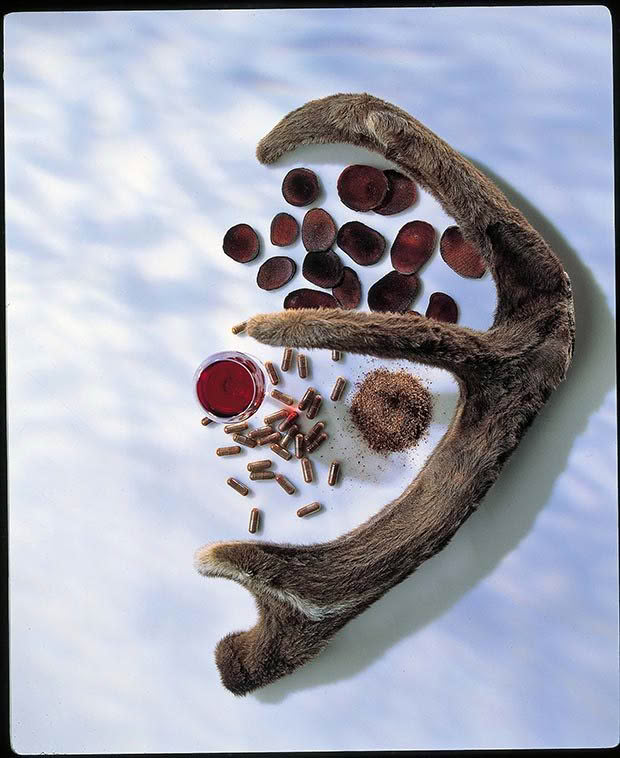
Traditional forms of processed velvet.
Most of what Rodney knows he learned from his father on the family’s 839ha farm in Hororata. At 15 he left school to help his father out after a back operation and never went back. Rodney’s father, Harold, began farming deer for velvet and venison about 17 years ago.
In 2001 Harold purchased Brockley, a 202ha hill country farm in nearby Windwhistle, and Rodney helped him develop it into a productive deer farm. In 2006 Harold bought a hunting block for trophy stags, and Rachael and Rodney moved to Brockley as managers. Two years ago they took the plunge and bought the farm.
“Coming in we had these grand ideas about how it was going to work,” says Rachael. “We soon realised that farmers are not really that well off and it is hard work. Rodney’s dad is a brilliant farmer and taught him a lot, but he never really talked to him about the business side.”
Both admit the last two years have been “pretty rough” and they are still recovering from the low lamb prices, overspending and the big wind storm of 2012 in the first year. The farm is currently running 150ha in deer and 40ha in calves and sheep.
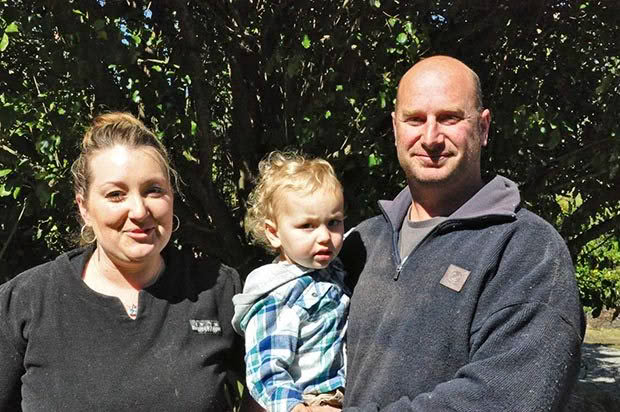
Rachael, Rodney and son Lachlan.
The calves are rising two year olds which Rodney is contracted to raise, and help with cash flow. But their focus for development is the velvet side of the business. Rachael says the current price for velvet is encouraging. “Rodney is cutting velvet in spring and early summer and producing $100-$120/ kg which for three months’ work is about $25,000. It’s pretty good.”
They work with a reputable, independent buyer who has connections in the Asian market, and has helped and mentored them. “I liked his approach,” says Rachael. “Some of them can be a bit funny with women but Graeme sat down with me and started teaching me what I needed to know for the budget.”
BLUE BLOODLINES
Gradually they have found their feet, developed business goals, and Rachael took over the business side. “I’m pretty savvy with computers, and I am not as attached to farming. I just see this is what we are producing and these are our expenses, so we need to maximise the return for what we’ve got.”
They have set a goal to raise the weight of velvet per head by 50% over the next five years. To this end, they have set out to improve their bloodlines, buying in 25 hinds and two good stags. “The mother’s genes dictate the good velvet so it’s no good putting a bloody good stag over an average hind.”
Antler weight is highly heritable, so improvement should be rapid. “Every year 30-40 hinds and stags go to the works and are replaced by 40-50 replacements so the herd is increasing and improving every year. We have to be careful with cash flow as it will be a couple of years before the investment comes through.” Any stag producing under 2kg of velvet will be culled, advancing their goal of producing a minimum 5 -10 kg per animal.
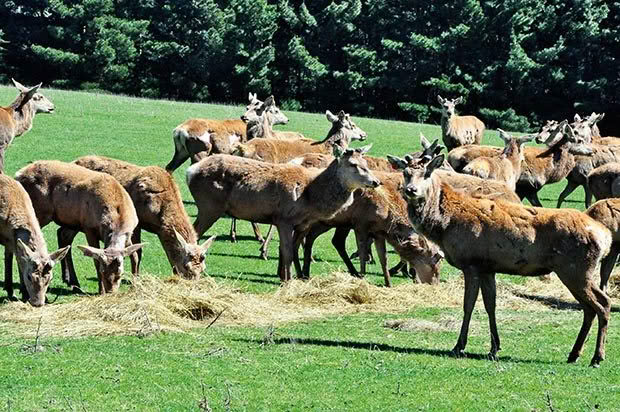
Feeding, but with a watchful eye.
CUTTING THE VELVET
Velvet is the early antler growth and is mostly used to make nutritional supplements for Asian markets. The fast-growing, soft cartilaginous tissue is well supplied with blood vessels. It is humanely harvested after 45 and 60 days of growth, before it begins to calcify (harden) from the base.
Cutting it is quite a procedure and must be done under anaesthetic by a veterinarian, or by a trained, registered person. Rodney completed the required course run by the industry’s National Velvetting Standards Body (NVSB), qualifying him to do it himself. His technique is checked annually by his vet and audited through the NVSB by one of their senior veterinarians.
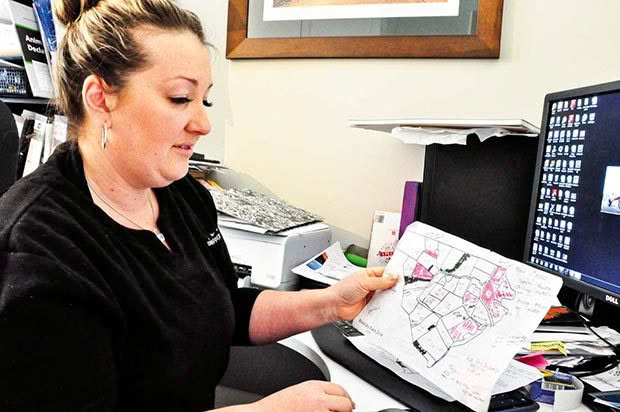
Velvet is graded from Super A to D, with downgrading for any antler which does not meet top grade specifications. Higher value grading goes to larger heads, mainly determined by genetics, but there is also considerable demand for smaller velvet from younger stags.
Velvet is classified as a food so there are regulations around the storage and handling, including having dedicated freezer space. The velvet is stored upside down so the blood doesn’t run out as it freezes. Apart from velvetting, Rodney brings the deer in for drenching for parasites and for TB testing.
Handling deer at times like this without stressing them is one of the challenges of deer farming. They respond to established routines, the simplicity of the shed and approach, its layout and design, and quiet but firm handling. Covered yards make the deer more settled to work with.
Rodney brought in his covered yards from a sheep farm and converted them for deer with higher doors and sides. The decision to focus on the velvet side of the business works for both of them. Rachael enjoys the marketing and business side, but Rodney likes working hands-on with the herd.
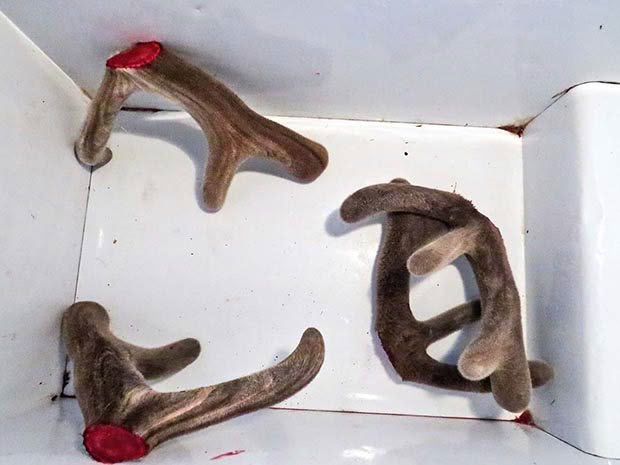
“I like deer, they’re nice animals. They are intelligent, they’re individuals and very inquisitive. On a nice day they’re playful, they’ll play in the puddles.” Rodney prefers working with red deer as they are smaller and less aggressive than wapiti. “The odd one will have a go at you but they usually let you know, by grinding their teeth.”
However in the mating season – ‘the roar’ or ‘the rut’ – stags can be very aggressive and certainly change their respect for their farmer minders.
“The stags go all stupid! Some of them are mad, they stop eating, totally.” In the wild stags will confront each other, roaring and showing off their antlers. Huge amounts of energy are invested in herding hinds and defending their ‘harems’. On farm they may still compete and fight with each other.
“Management practices include keeping animals in their respective age groups, with plenty of space to spread out and sort the pecking order, and keeping nonmating stags well away. “They can hurt each other,” says Rodney. “But the older ones are normally dominant and the young ones learn quick.”
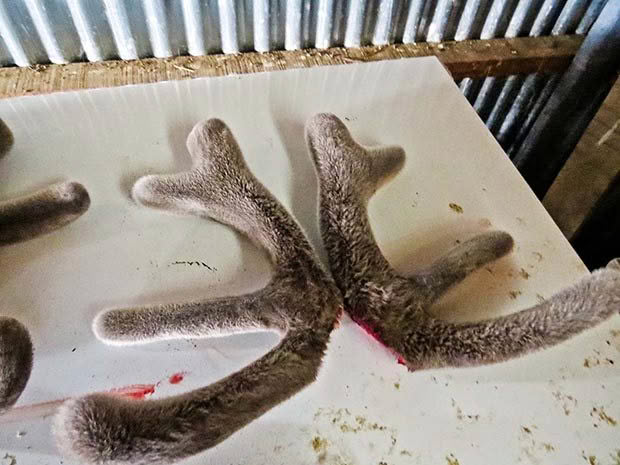
Special care is needed as stags can also hurt people. Rachael stays well away. “I don’t go near the stags, they freak me out.” Rodney is not fazed. “The odd one will rear up and wack you,” says Rodney. “I’ve had the odd hoof mark on my back. They usually go to the works.”
WHAT MAKES GREAT VELVET
Feed is everything says Rodney. In the fight for who is top dog, stags stop eating and may lose up to 30% of their fat and accumulated body weight.
Hinds ovulate towards the end of March, cued by the shorter days after Christmas. Usually groups of 30-40 hinds will be run with a single stag. Most conception has occurred by the end of April and pregnancy can be diagnosed by ultra-sound scanning.
Poor feed in this time can decrease velvet production by 10-20% so when the up-to-six week roar tails off, it is key to rebuild the lost weight through extra feed, both before winter bites and again 3-4 weeks prior to the velvet growth which starts in early spring.
Calves are born between mid-November and Christmas. While lactating, the feed requirements for hinds are very high. This can be difficult in January and February when pasture growth decreases in the hot, dry weather, but Brockley is “pretty summer safe,” says Rodney.
WHY VELVET IS SO HEALTHY
Male deer grow new antlers each spring and cast off in late winter in temperate climates. The new soft growth has a soft velvety feel, hence the name. Velvet has been used for over 2000 years by the Chinese, mainly as a wellness tonic to boost the immune system.
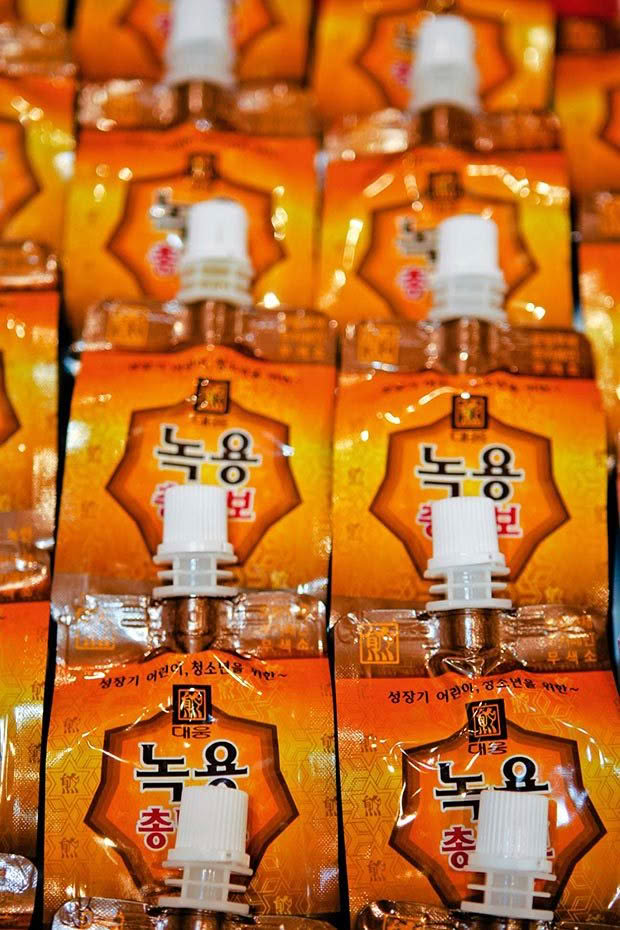
Processed velvet is given to children to help prevent childhood diseases in a similar way to the use of vitamins in the West. Around 60% of New Zealand’s velvet is consumed in South Korea where it is dried, sliced or increasingly used as an ingredient in health food tonics. Considerable research has been carried out on velvet in the last 30-40 years, mainly in Asia.
It tends to support velvet’s restorative, strengthening and protective effects on the body, but the mechanisms for its actions are still poorly understood.
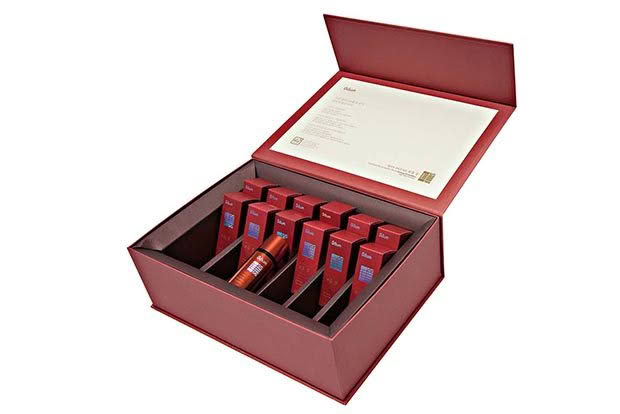
A TOWNIE CONVERTED
Rachael juggles family and her own business with farm planning. She may not be out on the farm every day but she has a pretty good handle on what is going on. Drawing up a scale farm plan has helped enormously.
“Fertiliser is so expensive… I know now which paddocks we need to look after. (Pointing to it) I can now work out that this was balage last year, this is going to be rape and this is young grass.” The once self-confessed townie says she now feels a sense of responsibility to look after the land that her husband’s family has worked so hard for.
“I am passionate about keeping the land for the Inch family. Rodney’s family worked for generations to provide for us. We’re only guardians of the land. We’re incredibly fortunate.”
WHY DEER FARMING IN NZ IS BOOM AND BUST
The first deer were brought to New Zealand from England and Scotland for hunting in the midto- late 19th century. They were released into the Southern Alps and foothills but without natural predators soon became a pest. Commercialisation of feral deer began in the late 1960s with the export of wild venison and some approaches from Korea for velvet.
The first farmed deer licence was issued in 1971, and in 1975 the New Zealand Deer Farmers Association was formed. Rapid growth followed, peaking at around 5200 farms in the early 2000s. Today there are over 2500 farms, making it the largest commercial deer farming industry in the world. New Zealand began exporting velvet in the late 1970s.
In the 2004-5 season, over-supply lead to a low farm price of $45/ kg. Many farmers sent stags to the works which then caused an over-supply of venison. Many farmers went out of deer altogether, burnt by the low returns.
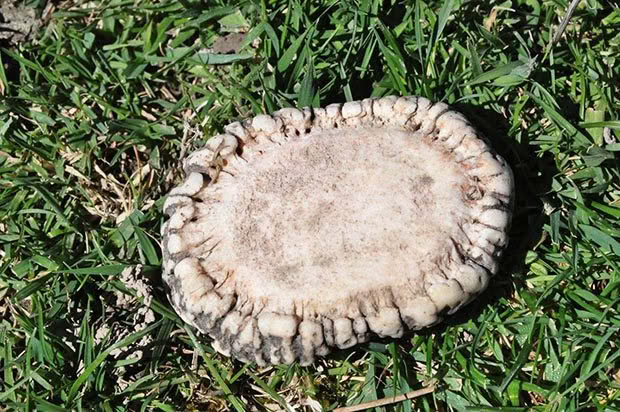
A ‘button’, the left-over antler after cutting velvet.
The last five years have seen much-needed stability in the velvet market at more acceptable prices. Today New Zealand deer velvet is recognised by Asian clients as the best in the world and is highly valued for its strict quality control and free-range environment.
Demand appears to be increasing and China is rapidly emerging as a market of significant importance. Early indications suggest that the coming season should be a sixth season of relative stability, with prices tipped to firm slightly.
WAPITI (North American elk)
Adult size: up to 400kg. These are the larger of the two types of deer farmed in NZ. They grow faster than red deer so they are ready for slaughter earlier, potentially commanding higher prices in the Northern hemisphere autumn market. Wapiti also have bigger antlers and higher velvet production. The trade-off is that they are more fractious and unpredictable, which combined with their larger size makes them harder to handle than red deer.
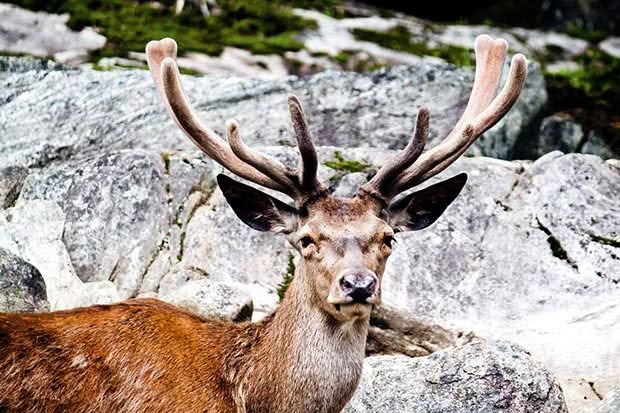
RED DEER
Adult size: 200-250kg. The smaller red deer is about half the size and easier to handle. About 85% of New Zealand’s farmed deer is red deer, though inter-breeding is common, especially for venison production.
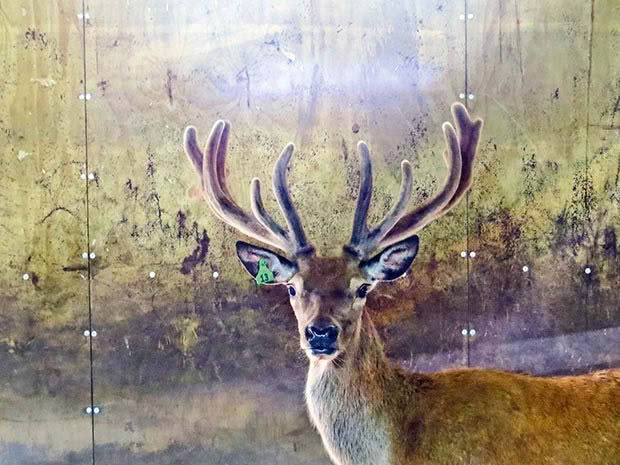
7 WAYS TO KEEP DEER HAPPY
1. Build well-constructed, purpose-built fences.
2. Design sheds and yards to handle deer efficiently and with minimum stress.
3. Use restraint systems that control animals safely for velvetting, drenching, worming, TB testing etc.
4. Handle in a quiet, confident, assertive way.
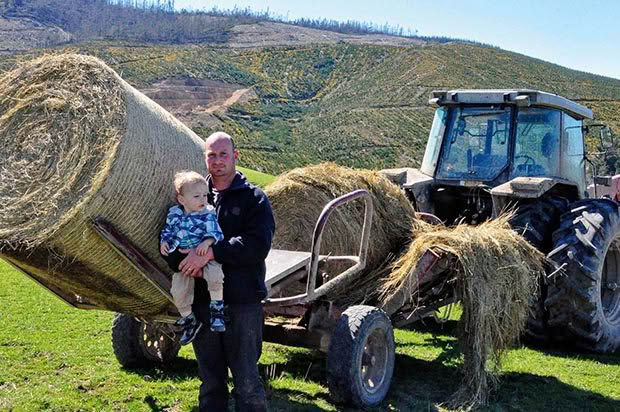
Rodney and Lachlan.
5. Learn to recognise signs of agitation.
6. Avoid eye contact as they enter yards.
7. In yards, avoid sudden movements, and don’t have children, visitors, or unusual objects on site.
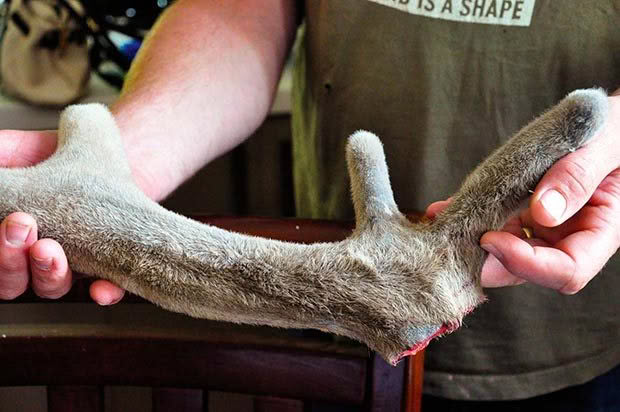
Rodney with a deer antler after cutting.
5 TIPS IF YOU WANT TO BE A DEER FARMER
1. Spend a week working with a farmer.
2. Make sure you are not afraid of deer. If you are at all standoffish with deer you are better off not working with them as they can tell.
3. Consider the high capital investment, including fencing of 4-6ha paddocks, and good breeding stock.
4. Do your homework on markets and recognise risks.
5. Look at cash flow and how to bridge the non-productive years with other income sources.
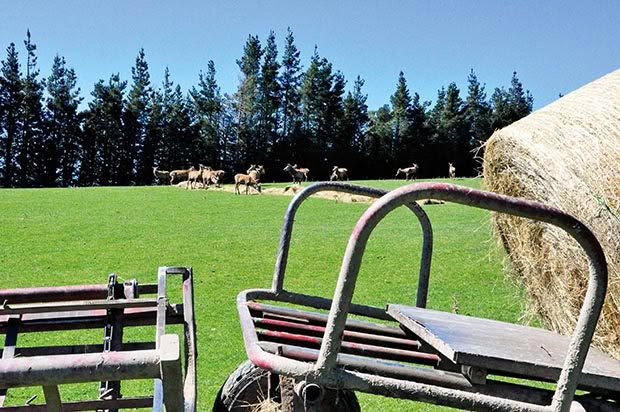
Feeding out to mixed age red stags.
This story first appeared in the January 2015 edition of NZ Lifestyle Block.
Love this story? Subscribe now!
 This article first appeared in NZ Lifestyle Block Magazine.
This article first appeared in NZ Lifestyle Block Magazine.
